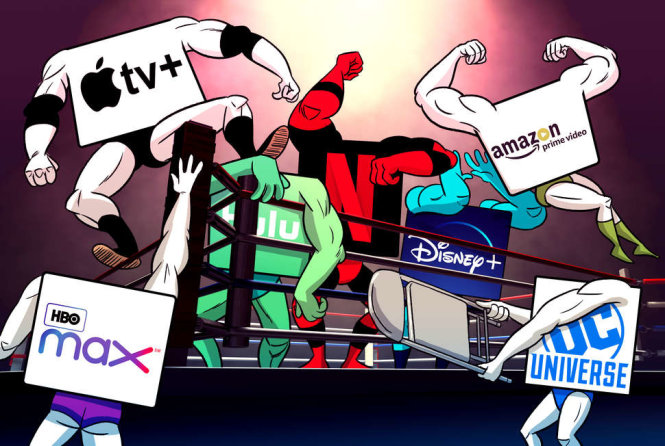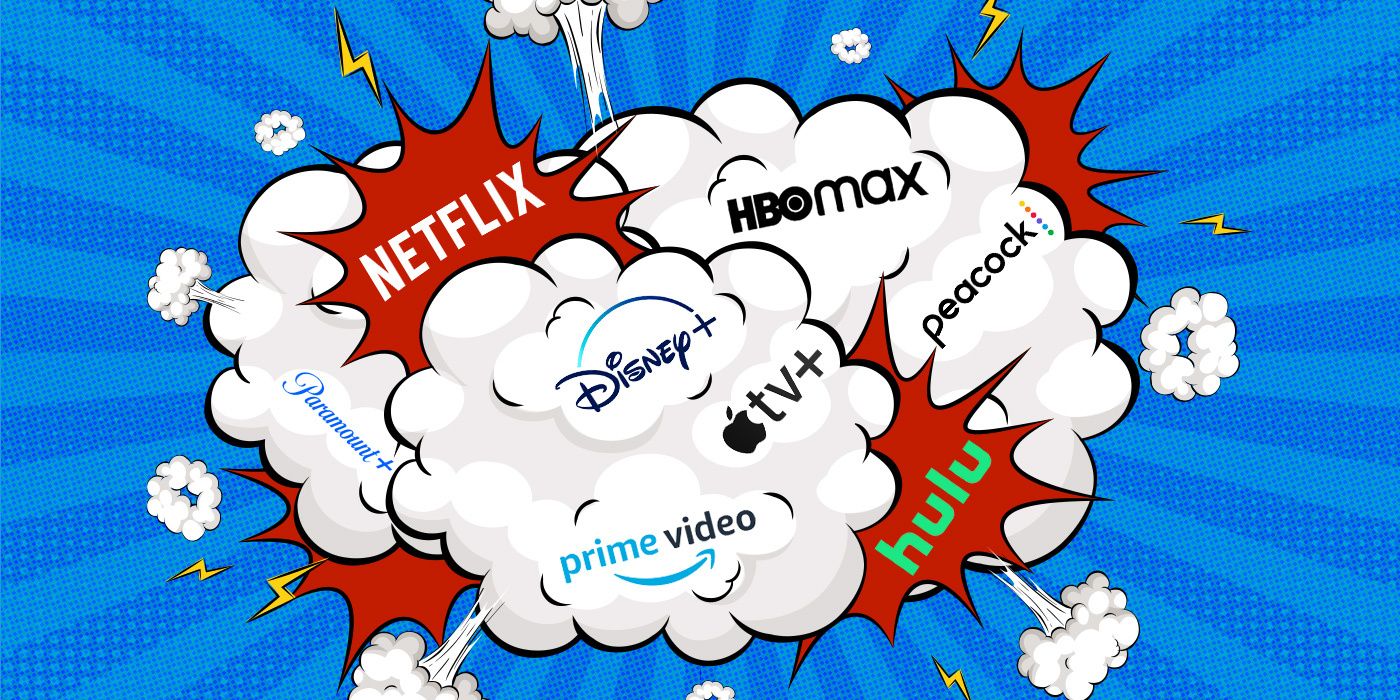The Streaming Wars: A Comprehensive Overview
Introduction to the Streaming Wars
In recent years, the streaming industry has transformed the way we consume television and film. With the rise of services like Netflix, Amazon Prime Video, and Disney+, traditional media companies have faced fierce competition, leading to what is now known as the Streaming Wars. This battle is not just about who provides the best content, but also about audience engagement, advertising revenue, and market dominance. In this article, we’ll delve into the key players, the impact on traditional media, content strategies, and what the future holds for the streaming landscape.

The Rise of Streaming Services
The concept of streaming is not new, but the explosive growth of streaming services began in the late 2000s. As broadband internet became more accessible, companies began to leverage this technology to provide on-demand content.
The Players in the Game: Major Streaming Platforms
Netflix: The Pioneer
Netflix started as a DVD rental service in 1997 but transitioned to streaming in 2007. By investing heavily in original content like House of Cards and Stranger Things, Netflix established itself as a leader in the industry. Its success has prompted competitors to rethink their strategies and innovate continuously.

Amazon Prime Video: The Contender
Amazon Prime Video has also made significant strides since its launch in 2006. With its unique selling proposition of combining streaming with e-commerce benefits, it offers an extensive library of movies and TV shows alongside exclusive content like The Marvelous Mrs. Maisel. Amazon’s ability to bundle services gives it a competitive edge, making it a formidable opponent in the streaming wars.
Disney+: The Game Changer
Launched in November 2019, Disney+ quickly became a major player in the streaming market. Leveraging its vast catalog of beloved franchises such as Star Wars, Marvel, and Pixar, Disney+ attracted millions of subscribers almost instantly. Its family-friendly content and lower subscription cost have appealed to a broad audience, positioning it as a strong contender against established platforms.
Other Notable Platforms
Apart from the giants mentioned above, several other platforms are carving their niches in the streaming landscape:
- HBO Max: Known for its rich library of high-quality content, including critically acclaimed series like Game of Thrones and Succession.
- Hulu: A pioneer in combining current television shows with original content, appealing to viewers who prefer a mix of both.
- Apple TV+: Entered the market with a focus on original programming, showcasing its ability to invest in high-profile projects and celebrity talent.
The Impact on Traditional Media
The Streaming Wars have fundamentally changed the media landscape. As more viewers turn to streaming services, traditional cable TV is experiencing a decline.
Decline of Cable Television
Cable subscriptions have steadily decreased, with many consumers opting for streaming as a more flexible and cost-effective alternative. According to a report by the Leichtman Research Group, over 25% of U.S. households are now cord-cutters, indicating a significant shift in viewing habits.
Changing Viewing Habits
The way audiences consume content has evolved dramatically. With the rise of binge-watching and on-demand viewing, traditional scheduled programming has become less relevant. Viewers now prioritize convenience, often choosing to watch entire seasons in one sitting.
The Shift in Advertising Revenues
The migration of viewers to streaming platforms has caused a shift in advertising revenues. Traditional television networks are losing ad dollars to streaming services that offer targeted advertising. In response, many networks are investing in their platforms to retain audiences and advertisers.
Content Strategies: Original vs. Licensed Content
As competition heats up, streaming services are focusing on their content strategies to attract and retain subscribers.
The Importance of Original Programming
Original content has become a crucial factor for streaming success. Services like Netflix and Disney+ have heavily invested in creating unique series and films to differentiate themselves from competitors. Original programming not only helps in retaining subscribers but also in building brand identity.
Blockbuster Hits and Critical Darlings
Consider the impact of shows like The Crown on Netflix or WandaVision on Disney+. These series not only garnered critical acclaim but also boosted subscriber growth significantly.
Licensing Deals and Their Implications
While original programming is vital, licensing agreements for existing shows and films remain crucial for attracting new viewers. Services often engage in competitive bidding wars for popular shows, leading to high costs but also significant audience draw.
In the next section, we will explore the future of the streaming wars, including potential mergers and acquisitions, emerging technologies, and the role of international markets in shaping the next phase of this competitive landscape. Stay tuned for an in-depth analysis of what lies ahead in the battle for viewer attention!
The Future of the Streaming Wars
As the streaming landscape continues to evolve, several factors will shape its future trajectory. With an increasing number of platforms competing for viewers’ attention, it is essential to examine the potential trends that could define the next phase of the Streaming Wars.
Mergers and Acquisitions: A New Era of Consolidation
One significant trend likely to continue is mergers and acquisitions among streaming services. As competition intensifies and companies strive to gain market share, many platforms may look to consolidate their resources through strategic partnerships or acquisitions.
- AT&T and Discovery: A notable example is the merger of AT&T’s WarnerMedia with Discovery Inc., which created a robust competitor in the streaming market. This merger aims to combine their content libraries, enabling them to offer a more comprehensive platform for subscribers.
- Potential Future Mergers: Analysts speculate that we may see further consolidation, particularly among smaller or struggling platforms seeking to enhance their offerings. As companies look for ways to improve their content libraries and bolster subscriber numbers, we may witness a wave of strategic mergers.
Technological Advancements
Emerging technologies will also play a crucial role in shaping the future of streaming. Innovations in areas such as artificial intelligence (AI), virtual reality (VR), and augmented reality (AR) could redefine viewer experiences and content delivery.
- Personalization through AI: Streaming platforms are increasingly using AI algorithms to tailor content recommendations for users. By analyzing viewing habits and preferences, services like Netflix can suggest shows and movies that align with viewers’ tastes, thereby improving user engagement.
- Interactive and Immersive Content: As VR and AR technologies mature, we may see a rise in interactive and immersive content offerings. Platforms that incorporate these technologies could provide unique experiences, attracting viewers looking for something beyond traditional storytelling.

International Markets: The Next Frontier
As the competition intensifies in established markets like North America and Europe, streaming services are increasingly turning their attention to international markets. Expanding into regions such as Asia, Africa, and South America presents both opportunities and challenges.
- Localized Content: To succeed in these diverse markets, platforms will need to invest in localized content that resonates with specific cultural contexts. For example, Netflix’s strategy of producing original series in various languages has proven effective in attracting international audiences.
- Regional Partnerships: Collaborating with local production companies and creators can enhance the authenticity of the content and foster a deeper connection with viewers. Such partnerships can also help platforms navigate regulatory challenges and tap into local expertise.
FAQs About the Streaming Wars
1. What are the main streaming services currently competing?
The primary players in the streaming wars include Netflix, Amazon Prime Video, Disney+, HBO Max, and Apple TV+. Each service has its unique offerings, appealing to different audience segments.
2. How have streaming services changed viewing habits?
Streaming services have shifted viewing habits from scheduled programming to on-demand content. Viewers can now watch entire seasons at their own pace, leading to a rise in binge-watching.
3. Are cable TV subscriptions declining?
Yes, there has been a significant decline in cable TV subscriptions as more people choose to cut the cord in favor of more flexible and cost-effective streaming options.
4. What role does original content play in the success of a streaming service?
Original content is critical for attracting and retaining subscribers. Platforms invest heavily in unique series and films to differentiate themselves and build brand identity.
5. Will we see more mergers in the streaming industry?
Yes, as competition increases, further consolidation through mergers and acquisitions is likely. Companies may seek partnerships to enhance their content offerings and market presence.
Conclusion
The Streaming Wars are far from over, and the competition will continue to intensify as new players enter the market and established platforms innovate. With technological advancements, potential mergers, and a keen focus on international markets, the landscape of streaming is ever-changing. As viewers, we can expect an exciting future filled with diverse content options and enhanced viewing experiences.
As you explore the world of streaming, consider what platforms best suit your viewing habits and preferences. Whether you are a fan of gripping dramas, blockbuster movies, or family-friendly shows, there is a service out there for everyone.
For more insights on the evolution of media consumption, check out The Future of Media and explore how technology continues to reshape the entertainment landscape.


